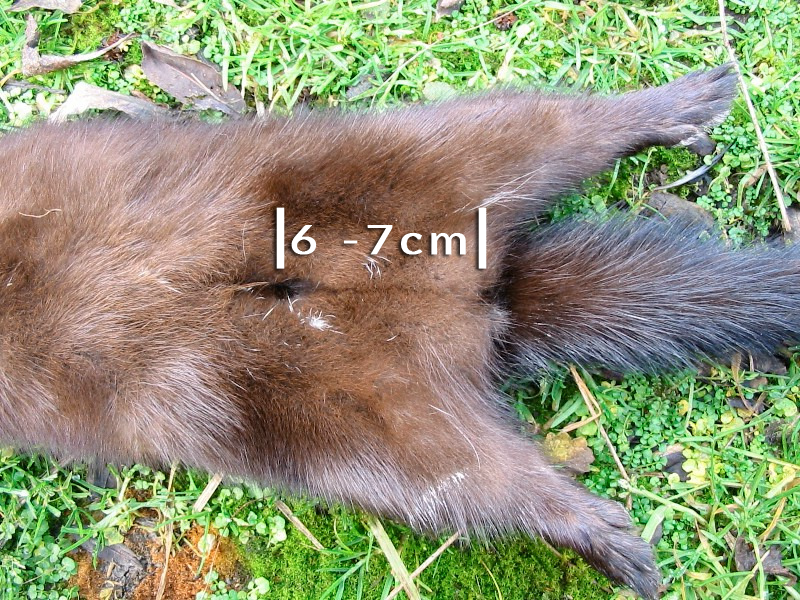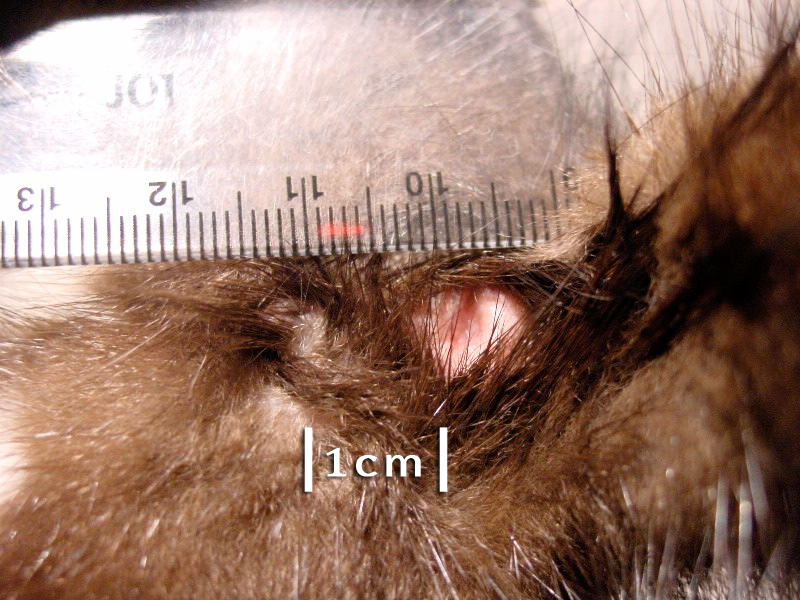Humane Dispatch & Record Keeping
This advice on how to carry out the humane dispatch of mink should be read in conjunction with the Waterlife Recovery Trust (WRT) advice on the safe use of air weapons in this Best Practice Guidance series.
This guidance considers how to reliably dispatch a mink humanely, i.e. how to kill it instantly with one shot to the head, and how to record information from the corpse to help improve our knowledge of the mink population.
The Air Weapon
The weapon we recommend to humanely dispatch mink is a 0.22 (or 0.177) air rifle with a power greater than 8 ft lbs but less than 12 ft lbs; above this power a Firearms Certificate is required. If a rifle is being purchased specifically for the purpose of mink control a rifle towards the top of this range is preferable, as this would allow some decline in performance over time but still retain ample power to achieve a clean dispatch. The weapon should not have a sound moderator as this makes it difficult to put through the cage mesh. Equally, if used solely for humane dispatch, the front sight could also be removed to avoid catching in the cage mesh.
Air rifles powered by a range of methods can be used, provided they are in the appropriate power range. However, a spring loaded or gas ram powered air rifle will probably be the most appropriate if the weapon is primarily to be used for humane dispatch. The disadvantage of CO2 powered rifles is that once a cylinder is started it should be used within a relatively short time. If mink are to be dispatched only occasionally this can lead to a waste of gas.
If an older air rifle is being used, where there might be concern over its power, we recommend that you have the power tested using a chronograph. Many gun shops will provide this service.
Pellets of any type may be used in air rifles of the recommended power, although those designed for hunting and pest control would be ideal. You should check all pellets before they are used to ensure that they have not been damaged.
Other published advice recommends the use of an air pistol in conjunction with ‘Prometheus’ pellets and combs to restrain the mink at the end of the trap while it is shot. However, these pellets are not always available and other pellets do not achieve the same penetration when fired from a pistol (these are limited to 6 ft lbs). Suitable air pistols are also not widely held by volunteers. Consequently, the WRT recommendation above is for a more robust procedure that will reliably dispatch mink using a range of pellets, and weapons that are widely available.
Dispatch
Before moving the cage trap containing the mink, ensure that you have everything ready to shoot the mink, including a spare pellet in case it should be needed. The cage trap containing the mink should ideally be placed on an area of soft ground to reduce any chance of ricochet. Do not dispatch the mink while members of the public are about, both for their safety and to avoid the possibility of anyone being distressed by the procedure. Keep everything as quiet and calm as possible and, when the mink has settled, position the rifle for the shot. Ideally the rifle barrel should be placed through the cage mesh to avoid any chance of hitting the mesh. The mink should then be dispatched with a shot vertically down through the top of the head, at a range of a few inches. The shot should be slightly to one side of the mid-line to avoid the ridge running along the centre of the skull, which is particularly prominent and strong in adult males. One shot will normally kill a mink immediately but if, for whatever reason, this is not the case be ready to quickly fire a second shot. It is not unusual for mink to twitch after death, but if the animal does not blink when its eye is lightly brushed it is dead.
It is sometimes necessary to move a trapped mink a short distance, still securely caged, to ensure safe and humane dispatch. Despite what is occasionally heard, we are not aware of legal constraint to doing this under the Wildlife and Countryside Act 1981 (W&CA). Although mink are on Schedule 9 of the W&CA, they are not listed as an invasive alien species of Union concern under the Invasive Alien Species Regulations, which is where some confusion may have occurred. Therefore, in the case of mink, the particular requirements of Section 14AA of the W&CA, covering animals of Union concern and issues such as movement, do not apply.
Recording
American mink that are caught and dispatched are a valuable source of information and it is really important that anyone trapping a mink should let whoever is co-ordinating control in their area know as soon as possible. Indeed, if the mink was caught in a smart trap they may of course know as soon as the trapper and may collect the body! However, whatever the circumstances we would like to know:
- The date and place of capture (e.g. a location plus a grid reference or Lat. / Long.)
- Whether it is male or female.
- Again, if you are able, the weight and / or its length, from the tip of the nose to the end of the tail.
- A photograph of the mink, with it lying on its back.
- Finally, that all important tissue sample for DNA analysis (find out why here – Development: DNA & Detection Dogs). A tip of an ear collected in an alcohol filled tube, if you have been given one, is perfect. If you have no tubes please contact us and we should be able to let you have some along with instructions on how to take a sample. Failing that, a small sample in a plastic bag in your freezer (domestic conditions allowing!) that can be collected later is an alternative.
Please remember mink are potential vectors of transmissible diseases, so always follow our Safety First guidelines when handling animals. We know such detailed recording is not for everyone but if you can help with any of these, particularly sending us a tissue sample, it would be extremely helpful. A form for reporting a capture and attaching a photograph is available on our website, along with much more besides. The form includes details about sending us the tissue sample via a postage paid envelope.
Male or Female American Mink?
When trying to control any population, it is the females that are particularly important and knowing where they are most likely to be found can make control more effective. There is clearly a big size difference between the sexes, with adult males (900g—2kg) around twice the size of adult females (550g-850g). However juvenile males clearly overlap with adult females in weight and to be sure of the sex, it is best to look at the genital region. Here, as shown, there is a substantially greater distance between the urinary tract and anus in males than female
Health and Safety
Please ensure that you are fully aware of how to use an air weapon safely and have read our guidance if you are in any doubt. As with handling any wild animal, personal hygiene is important so please ensure all cuts are covered, wear gloves if possible and wash your hands well as soon as possible, always before eating or smoking. A generic risk assessment to help manage risks that are associated with mink trapping is available here.





